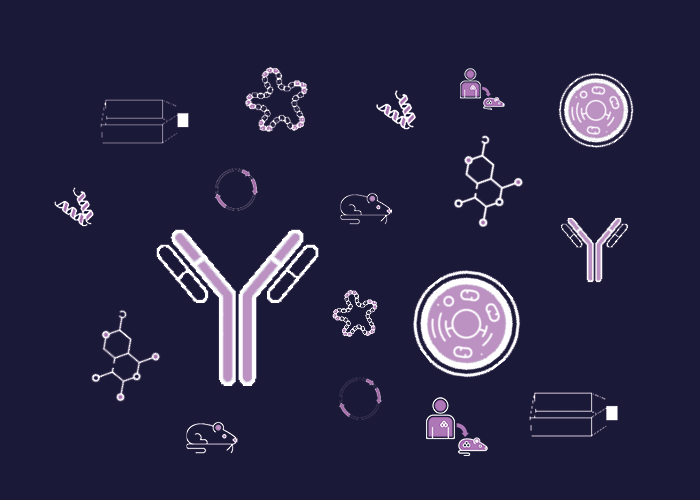Cat. #151666
Anti-cROS [4-6G]
Cat. #: 151666
Sub-type: Primary antibody
Unit size: 100 ug
Availability: 3-4 weeks
Target: cROS
Class: Monoclonal
Application: IHC ; IF ; IP ; Fn ; WB
Reactivity: Human
Host: Mouse
£300.00
This fee is applicable only for non-profit organisations. If you are a for-profit organisation or a researcher working on commercially-sponsored academic research, you will need to contact our licensing team for a commercial use license.
Contributor
Inventor: Al Charest
Institute: Tufts University
Tool Details
*FOR RESEARCH USE ONLY (for other uses, please contact the licensing team)
- Name: Anti-cROS [4-6G]
- Research fields: Cancer;Cell signaling and signal transduction;Genetics
- Clone: 4-6G
- Tool sub type: Primary antibody
- Class: Monoclonal
- Conjugation: Unconjugated
- Reactivity: Human
- Host: Mouse
- Application: IHC ; IF ; IP ; Fn ; WB
- Description: Monoclonal antibody directed against cROS, a proto-oncogene with therapeutic target potential.
- Immunogen: Extracellular portion of ROS amino acid 1-285 fused to Fc, transiently expressed in 293 cells and purified using PtnA column chromatography.
- Immunogen uniprot id: P08922
- Isotype: IgG1
- Myeloma used: Sp2/0-Ag14
- Recommended controls: Cells transiently expressing human cROS, mouse cells expressing human cROS
Target Details
- Target: cROS
- Tissue cell line specificity: Cells transiently expressing human cROS, mouse cells expressing human cROS
- Target background: c-ROS is a proto-oncogene tyrosine kinase, that is highly-expressed in a variety of tumour cell lines and belongs to the sevenless subfamily of tyrosine kinase insulin receptor genes. It is a type I integral membrane protein and may function as a growth or differentiation factor receptor. The c-ROS gene promoter region has been identified and characterized and it has been shown that the ectopic expression of c-ROS in tumours is tied to hypomethylation of a CpG island in the c-ROS promoter. Tumours with ROS1 mutations are typically responsive to small molecule tyrosine kinase inhibitors.
Applications
- Application: IHC ; IF ; IP ; Fn ; WB
Handling
- Format: Liquid
- Concentration: 1 mg/ml
- Unit size: 100 ug
- Storage buffer: PBS with 0.02% azide
- Storage conditions: Store at -20° C frozen. Avoid repeated freeze / thaw cycles
- Shipping conditions: Dry ice
References
- Fei et al. 2019. Biosci Rep. 39(6):. PMID: 31138757.
- Zhang et al. 2019. Int J Biol Sci. 15(7):1460-1471. PMID: 31337976.
- Shih et al. 2017. Oncogene. 36(47):6542-6554. PMID: 28759046.
- Deng et al. 2014. Int J Mol Med. 34(3):661-8. PMID: 24968753.
- Charest et al. 2003. Proc Natl Acad Sci U S A. 100(3):916-21. PMID: 12538861.
- Oncogenic targeting of an activated tyrosine kinase to the Golgi apparatus in a glioblastoma.





